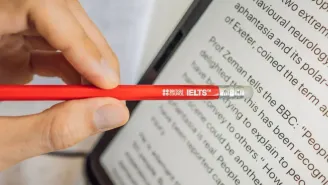The Forgotten Forest Reading Answers Passage
The Forgotten Forest Reading Answers Passage
Found only in the Deep South of America, longleaf pine woodlands have dwindled to about 3 per cent of their former range, but new efforts are underway to restore them.
Paragraph A. The beauty and the biodiversity of the longleaf pine forest are well-kept secrets, even in its native South. Yet it is among the richest ecosystems in North America, rivalling tallgrass prairies and the ancient forests of the Pacific Northwest in the number of species it shelters. And like those two other disappearing wildlife habitats, longleaf is also critically endangered.
Paragraph B. In longleaf pine forests, trees grow widely scattered, creating an open, parklike environment, more like a savanna than a forest. The trees are not so dense as to block the sun. This openness creates a forest door that is among the most diverse in the world, where plants such as many-1 powered grass pinks, trumpet pitcher plants, Venus flytraps, lavender ladies and pineland bog-buttons grow. As many as 50 different species of wildflowers, shrubs, grasses and ferns have been catalogued in just a single square meter.
Paragraph C. Once, nearly 92 million acres of longleaf forest nourished from Virginia to Texas, the only place in the world where it is found. By the turn of the 21st century, however, virtually all of it had been logged, paved or farmed into oblivion. Only about 3 per cent of the original range still supports longleaf forest, and only about 10,000 acres of that is uncut old-growth—the rest is forest that has regrown after cutting. An estimated 100,000 of those acres are still vanishing every year. However, a quiet movement to reverse this trend is rippling across the region. Governments, private organisations (including NWF), and individual conservationists are looking for ways to protect and preserve the remaining longleaf and plant new forests for future generations.
Paragraph D. Figuring out how to bring back the piney woods also will allow biologists to help the plants and animals that depend on this habitat. Nearly two-thirds of the declining, threatened, or endangered species in the southeastern United States are associated with longleaf. The outright destruction of longleaf is only part of their story, says Mark Danaher, the biologist for South Carolina’s Francis Marion National Forest. He says the demise of these animals and plants is also tied to a lack of fire, which once swept through the southern forests on a regular basis. “Fire is absolutely critical for this ecosystem and for the species that depend on it,” says Danaher.
Paragraph E. Name just about any species that occurs in Longleaf, and you can find a connection to fire. Bachman’s sparrow is a secretive bird with a beautiful song that echoes across the longleaf flatwoods. It tucks its nest on the ground beneath clumps of wiregrass and little bluestem in the open under-story. But once the fire has been absent for several years and a tangle of shrubs starts to grow, the sparrows disappear. Gopher tortoises, the only native land tortoises east of the Mississippi, are also abundant in longleaf. A keystone species for these forests, its burrows provide homes and safety to more than 300 species of vertebrates and invertebrates ranging from eastern diamond-back rattlesnakes to gopher frogs. If fire is suppressed, however, the tortoises are choked out. “If we lose fire,” says Bob Mitchell, an ecologist at the Jones Center, “we lose wildlife.”
Paragraph F. Without fire, we also lose longleaf. Fire knocks back the oaks and other hardwoods that can grow to overwhelm longleaf forests. “They are fire forests,” Mitchell says. “They evolved in the lightning capital of the eastern United States.” And it wasn’t only lightning strikes that set the forest aflame. “Native Americans also lit fires to keep the forest open,” Mitchell says. “So did the early pioneers. They helped create the longleaf pine forests that we know today.”
Paragraph G. Fire also changes how nutrients flow throughout longleaf ecosystems in ways we are just beginning to understand. For example, researchers have discovered that frequent fires provide extra calcium to endangered red-cockaded woodpeckers, which is critical for egg production. Frances James, a retired avian ecologist from Florida State University, has studied these small black-and-white birds in Florida’s sprawling Apalachicola National Forest for more than two decades. When she realised female woodpeckers laid larger clutches in the first breeding season after their territories were burned, she and her colleagues went searching for answers. “We learned calcium is stashed away in woody shrubs when the forest is not burned,” James says. “But when there is a fire, a pulse of calcium moves down into the soil and up into the longleaf.” Eventually, this calcium makes its way up the food chain to a tree-dwelling species of ant, which is the red-cockaded’s favourite food. The result is more calcium for the birds, which leads to more eggs, more young, and more woodpeckers.
Paragraph H. Today, fire is used as a vital management tool for preserving both Longleaf and its wildlife. Most of these fires are prescribed burns, deliberately set with a drip torch. Although the public often opposes any type of fire—and the smoke that goes with it—these frequent, low-intensity burns reduce the risk of catastrophic concentrations. “Forests are going to burn,” says Amadou Diop, NWF’s southern forests restoration manager. “It’s just a question of when. With prescribed burns, we can pick the time and the place.”
Paragraph I. Restoring Longleaf is not an easy task. The herbaceous layer—-the understory of wiregrasses and other plants, also needs to be re-created. In areas where the land has not been chewed up by farming but converted into loblolly or slash pine plantations, the seed bank of the longleaf forest usually remains viable beneath the soil. In time, this original vegetation can be coaxed back. Where agriculture has destroyed the seeds, however, wiregrass must be replanted. Right now, the expense is prohibitive, but researchers are searching for low-cost solutions.
Paragraph J. Bringing back Long-leaf is not for the short-sighted, however. Few of us will be alive when the pines being planted today become mature forests in 70 to 80 years. But that is not stopping long-leaf enthusiasts. “Today, it’s getting hard to find long-leaf seedlings to buy,” one of the private landowners says. “Everyone wants them. Long-leaf is in a resurgence.”
Let’s explore the questions and answers of The Forgotten Forest Reading passage.
Also Read: IELTS Reading Tips & Tricks 2025: Techniques for Band 9
The Forgotten Forest Reading Answers with Sample Questions
Have you read the passage? Now, take the test and find The Forgotten Forest Reading Answers! Try to answer these questions by yourself before you sneak a peek at the answers given below.
Check Out Top 25 IELTS Reading Practice Test Questions with Answers
Below are some top 20 free IELTS Reading Practice test online questions with detailed answers to enhance your IELTS preparation online. We have provided sample passages for each test type for your reference.
- What Is Exploration Reading Answers
- Effects Of Noise Reading Answers
- The Discovery Of Baby Mammoth Reading Answers
- The Dead Sea Scrolls Reading Answers
- The Ring-Tailed Lemur Reading Answers
- Why We Need To Protect Polar Bears Reading Answers
- Nutmeg A Valuable Spice Reading Answers
- What Is Meaning Reading Answers
- Cutty Sark Reading Answers
- The Step Pyramid Of Djoser Reading Answers
- South Pole Adventurer Reading Answers
- The Future Of Work Reading Answers
- Ambergris Reading Answers
- Trees In Trouble Reading Answers
- Could Urban Engineers Learn From Dance Reading Answers
- The Flavour Of Pleasure Reading Answers
- The Value Of A College Degree Reading Answers
- Why You Should Delegate Tasks To Team Members Reading Answers
- Corporate Social Responsibility Reading Answers
- Forest Management In Pennsylvania USA Reading Answers
- Making Time For Science Reading Answers
- The Power Of Play Reading Answers
- Coastal Archaeology Of Britain Reading Answers
- How The Other Half Thinks Reading Answers
- Changes In Reading Habits Reading Answers







